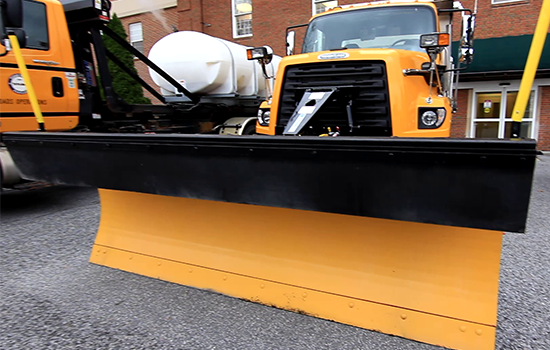Operations

In order to have an effective snow and ice removal plan, it is imperative that a standard procedure is routinely followed.
- Pre-determined snow routes
- Adequate salt and abrasive supply
- Pre-determined assignment for staff, including drivers, helpers, supervisors, office staff and other support personnel
- Weather forecasting and real-time condition assessment.
- Phasing of operations to meet current weather conditions.
- Post-storm truck and equipment cleanup.
The best method of providing passable roads is to fight snow/ice storms from the bottom up, i.e.; starting early prevents the bonding of snow and ice to pavements. The ability to prevent this bonding depends on three factors. First is the start time, second is the speed with which snow and ice are accumulating and third is the length of time it takes for our trucks to cover their routes one time. Carroll County uses the Everbridge Management mass notification system to change start times if necessary.
Our operational procedures are divided into 1 pre-treatment and 3 removal phases based upon current conditions during a storm.
Any of these phases can be repeated as necessary depending on the duration and intensity of the storm.
PRETREAT: BRINE
- Brine trucks that can apply a total of 12,000 gallons per day or about 240 lane miles. This is increased if time allows.
- The brine maker has a manufacturing capacity of 3,000 to 4,000 gallons per hour.
- Brine is a mixture of salt and water mixed at 23.3 percent
- Brine is applied at a rate of 50 gallons a lane mile.
- Brine can be applied up to 48 hours before an event and helps prevent the snow from bonding to the pavement and decreases salt usage. We do not apply brine when a storm is predicted to start as rain since the rain will wash the brine away.
PHASE 1: Phase 1 is performed on all routes at the beginning of a storm, a skiff of snow or and ice storm. During this phase, the drivers spread salt on their routes to prevent the snow and ice from bonding to the pavement.
PHASE 2: Phase 2 is performed on all routes and requires both plowing and spreading operations. This phase is intended to provide the most efficient two-way travel on all roadways. It requires two-way plowing operations and normally one-way salting operations.
PHASE 3: Phase 3 is performed on designated routes to keep mainline roads open and is done in the event of heavy snowfall accompanied by high winds and poor visibility. Trucks not having assigned phase 3 routes will report to their normal loading point and wait for further instructions. This phase is intended to keep the major county roadways open in the event of blizzard conditions and allow trucks without assigned phase 3 routes to be directed on emergency calls as needed.
UNPAVED ROADS:
Gravel roads are maintained when the storm event is moving out of the area. Roads are plowed by pickup trucks or graders as needed. As drivers finish assigned routes, they load with stone chips to spread on the gravel roads for traction. NO SALT IS USED ON GRAVEL ROADS.
If you have any questions regarding our practices and procedures, you may reach us at: 410-386-6717

